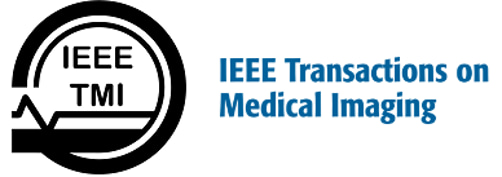
Our History
By AB Brill and MF Insana, October 2014
Discussions in the mid-1970s among nuclear medicine scientists in the IEEE Nuclear & Plasma Sciences Society (NPSS) identified a need for publishing “mathematical imaging” papers describing image reconstruction and related signal and image processing tasks. This was a time when novel detector geometries and reconstructions from projections were topics on the front burner in nuclear medicine (SPECT) and radiology (CT, MR). Leon Kaufman and Aaron B (Randy) Brill organized symposia at three successive NPSS meetings to discuss cardiac imaging, image reconstruction, and new data processing options. In turn, they and Bob Beck emerged as the first Chairs of the Nuclear Medical Scientist Group as it became an official Technical Section in NPSS. Other key players in these early developments were Andrew-Todd Pokropek, Orhan Nalcioglu, and Zee Cho.


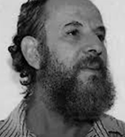
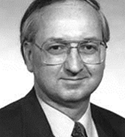



Editors in Chief of IEEE TMI. From left to right, MM Ter-Pogossian (1982-1984), AB Brill (1984-1991), G Herman (1992-1994), MW Vannier (1994-2002), MA Viergever (2003-2009), M Sonka (2009-2014), MF Insana (2015-2019)
Charged with the need for a new image science publication, NPSS applied to the IEEE Technical Activities Board (TAB) to form a new IEEE Journal to be named Transactions on Medical Imaging (TMI). The concept appealed to other IEEE Societies, namely, the Engineering in Medicine and Biology (EMBS), Acoustics, Speech and Signal Processing Society (ASSPS, now SPS), and the Sonics and Ultrasonics Society (SU, now UFFC), who applied jointly with NPSS in 1980 as co-sponsors. The proposal was approved and the first issue of TMI was published in July 1982.
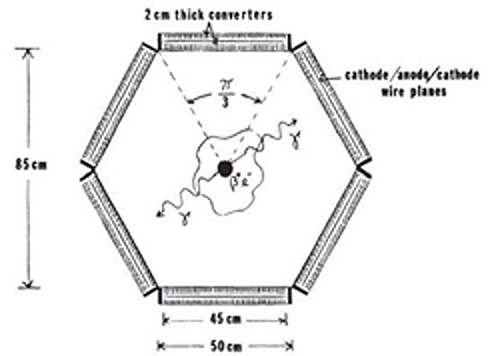

Figure 7 from the first manuscript in the first volume of TMI. A. Del Guerra, C.B. Lim, G.K. Lum, D. Ortendahl, V. Perez-Mendez, “Medical positron imaging with a dense drift space multi-wire proportional chamber,” IEEE TMI, Vol.1, No. 1, pp. 4-11, July 1982.
Michel M. Ter-Pogossian, an eminent physicist and nuclear medicine pioneer at Washington University, was the founding Editor-in-Chief (EIC) of IEEE TMI (1982-1984). TMI began life as a quarterly publication. Initially, there were seven Associate Editors: Randy Brill, Gabor Herman, Paul Lauterbur, Al Macovski, Orhan Nalcioglu, Jack Reid, and Henry Stark; all prominent in their respective fields. Since the first years of all new publications have a short publishing queue, it was decided to include unrefereed papers in some early issues, which ran counter to IEEE policy. Nevertheless, in the early years TMI continued to offer opinion papers by leaders in the field with transcripts of the discussion that followed.
Randy Brill, a well-known nuclear medicine scientist-physician at Brookhaven National Lab (BNL) in New York and Professor of Radiology at SUNY, Stony Brook, became the second EIC of TMI (1984-1991). The Transactions grew slowly at first but steadily over the years building on the hard work and vision of the founding organizers. Randy encourage manuscripts describing novel medical imaging technologies that solved tough diagnostic problems. These papers described limitation of the design in terms of noise and spatial resolution especially for unique acquisition geometries that challenged methods for reconstructing images from projections. During Randy’s tenure, the papers published were initially on CT, SPECT, PET, NMR, and US technologies but that quickly grew to include 3-D displays, image processing, MR pulse sequences, and radiation dose versus image quality tradeoffs.
In the December 1986 issue, TMI paid tribute to Johann K.A. Radon, an Austrian mathematician who pioneered approaches to the reconstruction of images from projections. TMI republished a paper originally published by Radon decades earlier that was translated from German by P.C. Parks. This effort lent a flavor of history to the vigorous efforts by many in image reconstruction at that time. By 1987, papers on statistical reconstruction and estimation of tissue properties from image/signal statistics were popular. In that year, Randy moved to the University of Massachusetts in Worcester, as Professor and Research Director in the Nuclear Medicine Department once the BNL hospital closed.
Randy Brill was a true champion of image acquisition and processing; i.e., papers dealing with novel modalities and instrumentation, acquisition geometry and associated reconstruction, and studies of diagnostic information content were strongly encouraged. Mirroring changes in the field, discussion of modalities using ionizing radiation yielded to newer imaging modalities, and over time more papers were published describing applications of computer vision and medical image analysis to medicine. The focus of TMI began to shift toward display-stage image analysis and psychophysics. TMI matured and broadened its scope significantly under Randy’s leadership.
Gabor Herman, a well-known medical image processing expert, was the third EIC (1992-1994). These were tumultuous times as the editorial office began the transition from paper to modern electronic publishing. There were many changes to the record management systems that guided the review process. The initial office budget was minimal. As Gabor labored with the transition, volumes began being published late. Gabor resigned in his second year which began an extended search for a new EIC.
Michael Vannier, another well-respected physician-scientist at Washington University (soon thereafter Chair of the Department of Radiology at the University of Iowa in Iowa City) became EIC (1994-2002). Mike was deeply interested and involved with the nuts and bolts of imaging modalities, visualization, and image processing for radiological applications. He set up an efficient office management system, using advanced support tools developed at IEEE Headquarters, i.e. Manuscript Central (now ScholarOne by Thompson Reuters). Mike began with 21 Associate Editors (AEs) in 1994 and completed his term with 35 AEs in 2002. He recruited Max Viergever to be the Associate EIC for TMI in 1996 as the pressures to publish in TMI grew. Mike increased the number of issues per volume from four to six per year in 1996, and then to twelve issues per year in 1999. He also maintained the tradition begun by Randy Brill of paying respects to past leaders, as he published a tribute to Michel Ter-Pogossian after his passing in June 1996. In 1998, TMI reviewed 114 new manuscripts and published 1200 pages in six annual volumes. As TMI garnered greater respect by the medical imaging scientific community, the demand for larger page budgets accelerated.
In 2003, Max Viergever, Professor of Medical Physics with broad expertise in computational imaging and vision at the University of Utrecht, became the next EIC (2003-2008). Max recruited Michael Unser, a professor at the Swiss Federal Institute of Technology (EPFL), to become the second AEIC of TMI. Michael’s expertise in sampling theories, multiresolution algorithms, wavelets, and the use of splines for image processing was what TMI needed given its increasing emphasis on image analysis and computer vision. The number of quality submissions inflated greatly, so Max expanded the AE roster to 55 persons and published 1700 pages by 2005. Before the first issue in 2006, Max reorganized the office, eliminating the AEIC position in favor of a strong administrative team.
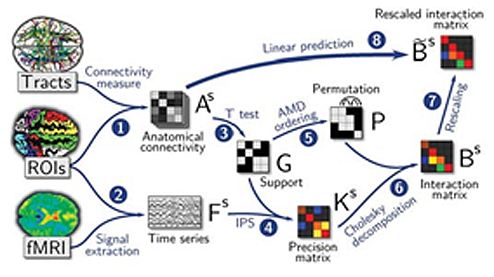

Figure 1 from E. Deligianni, G. Varouaux, B. Thirion, D.J. Sharp, C. Ledig, R. Leech, D. Rueckert, “A framework for inter-subject prediction of functional connectivity from structural networks,” IEEE TMI, Vol. 32, No. 12, pp. 2200-2214, 2013.
The Editorial Office returned to the University of Iowa as Milan Sonka became the sixth EIC of TMI (2009-2014). As Professor of ECE and Co-Director of the Iowa Institute for Biomedical Imaging, Milan continued the tradition of strong leadership especially in the area of image analysis. By the end of 2013, TMI had 64 AEs and an annual page budget of 2400. TMI now published papers from a very broad base at the frontiers of image science, including novel uses of imaging in neuroscience and engineering as shown below. As of 2014, and because of the series of increasingly productive terms of office by successive EICs, TMI had risen to achieve high status, superseding many established competitors. The current 5-yr impact factor for TMI is 4.6, Eigen factor 0.02, and Article Information score 1.6, placing it at the upper end of competitive journals. For example, it ranks second in journals on the topics of image science. In 2013, a new memorandum of understanding was written among the four member Societies, and EMBS became the Administrative Society for TMI.
In 2015, Michael Insana, Professor of Bioengineering at the University of Illinois became the seventh EIC for TMI. Mike is an image scientist with expertise in ultrasound with many basic and applied contributions. He will work hard to encourage and accelerate TMI growth in mathematical imaging with a focus on new modalities, acquisition, and interfacing with systems biology and medicine.
